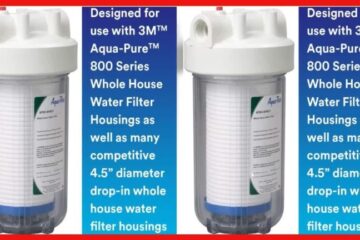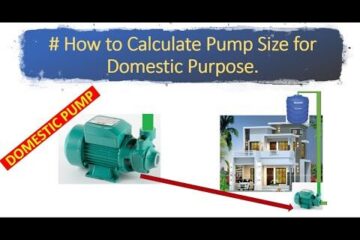In the article “Effective Ways to Troubleshoot Low Water Pressure,” you will discover practical solutions to address low water pressure in your home. Water pressure issues can be frustrating and impact daily activities like showering, doing laundry, or washing dishes. By implementing these seven techniques, you can effectively troubleshoot and resolve the underlying causes of low water pressure, ensuring a consistent flow throughout your household. From checking for clogged pipes to adjusting pressure regulators, this article will equip you with valuable knowledge to improve your water pressure situation.
Checking for System-wide Issues
Checking if the issue is isolated
When troubleshooting low water pressure, the first step is to determine whether the problem is isolated to a specific area or affecting the entire system. Start by checking all the faucets and fixtures in your home to see if the low water pressure is consistent across all of them. If only one area or faucet is experiencing low water pressure, then the issue may be localized and can be addressed accordingly. However, if the low water pressure is widespread, it indicates a system-wide problem that requires further investigation.
Inspecting the main water valve
You should also inspect the main water valve to ensure that it is fully open. The main water valve controls the flow of water into your home and is usually located near the water meter or where the main water supply enters your property. Make sure that the valve is turned on all the way to allow maximum water flow. If the valve was partially closed or turned off, opening it fully may resolve the low water pressure issue.
Checking for leaks
Leaking pipes can significantly impact water pressure, so it’s essential to inspect your plumbing system for any leaks. Check both visible and hidden areas for signs of leaks, such as dampness, water stains, or dripping pipes. Common places to check for leaks include under sinks, around toilets, and in basements or crawl spaces. If you spot any leaks, it’s crucial to repair them promptly to restore optimal water pressure.
Assessing the pressure-reducing valve
The pressure-reducing valve (PRV) is responsible for regulating the water pressure that enters your home. Locate the PRV, which is typically found near the main water valve or on the water supply line, and inspect its settings. The PRV should be set to a pressure that is suitable for your home’s plumbing system. If the pressure is set too low, it can result in low water pressure throughout the house. Adjust the PRV accordingly to ensure it is set to the appropriate pressure level.
Examining the Water Supply Line
Inspecting the water meter
The water meter is another important component to inspect when troubleshooting low water pressure. Locate the water meter, which is usually housed in a utility box outside your home, and check for any signs of damage or obstructions. The water meter should be free of debris, dirt, or any other substances that could impede the water flow. If you notice any issues with the water meter, it may be necessary to contact your water utility company for assistance.
Checking the shut-off valve
In addition to the main water valve, many homes have shut-off valves located at individual fixtures or appliances. These valves allow you to control the water flow to specific areas of your home, such as bathrooms or kitchen sinks. Check each shut-off valve to ensure that they are fully open. If any of the shut-off valves are partially closed, it can result in reduced water pressure to the corresponding area.
Verifying the condition of supply lines
Inspecting the condition of the supply lines is an essential step in troubleshooting low water pressure. Supply lines are the pipes that connect your fixtures and appliances to the main water supply. Check for any visible damage, such as leaks or corrosion, along the supply lines. Damaged supply lines can restrict water flow and cause low water pressure. If you identify any issues, it’s recommended to have them repaired or replaced by a professional plumber to restore proper water pressure.
Assessing the Pressure Regulator
Locating the pressure regulator
The pressure regulator is a device that controls the water pressure coming into your home. It is usually located near the main water valve or on the water supply line. Locate the pressure regulator and ensure it is easily accessible for assessment and potential adjustments.
Checking pressure regulator settings
Once you have located the pressure regulator, you need to check its settings. The pressure regulator should be set to the appropriate pressure level for your home’s plumbing system. Consult your appliance manuals or water utility company for the recommended pressure range. If the pressure regulator is set too low, it can cause low water pressure throughout the house.
Adjusting the pressure regulator
If the pressure regulator settings are not within the recommended range, you may need to adjust them to restore proper water pressure. The adjustment process may vary depending on the type of pressure regulator installed. Consult the manufacturer’s instructions or consider seeking the assistance of a licensed plumber to ensure the adjustments are done correctly. It’s crucial to exercise caution when making adjustments to avoid any potential damage to the pressure regulator or your plumbing system.
Examining the Pressure Tank
Identifying the pressure tank
Many homes with well water systems have a pressure tank that helps maintain consistent water pressure. The pressure tank is a reservoir that stores water and uses air pressure to push the water through the pipes. Locate the pressure tank, which is typically found near the well or inside the home, and inspect it for any signs of damage or issues.
Inspecting the pressure tank pressure
Check the pressure tank pressure to ensure it is within the appropriate range. You can do this by using a pressure gauge or consulting a professional plumber. If the pressure tank pressure is too low, it can result in reduced water pressure throughout the house.
Adjusting the pressure tank
If the pressure tank pressure is not within the recommended range, you may need to adjust it accordingly. The adjustment process for pressure tanks varies depending on the specific system installed. It’s recommended to refer to the manufacturer’s instructions or seek the assistance of a professional plumber to ensure proper adjustment of the pressure tank.
Cleaning or Replacing the Strainer
Locating the strainer
The strainer, also known as a filter or screen, is a component that prevents debris or sediment from entering your plumbing system. Locate the strainer, which is typically located at the point where the water supply line enters your home or at individual fixtures. In some cases, the strainer may be integrated into the faucet itself.
Cleaning the strainer
If the strainer becomes clogged with debris or sediment, it can restrict water flow and lead to low water pressure. Remove the strainer and clean it thoroughly using water and a brush or soft cloth. Make sure to remove any accumulated dirt or particles that may be inhibiting water flow. Once cleaned, reassemble the strainer and ensure it is securely in place.
Replacing the strainer
In some cases, the strainer may be damaged or worn out, making it ineffective in filtering debris. If cleaning the strainer does not resolve the low water pressure issue, you may need to replace it with a new one. Consult the manufacturer’s instructions or seek the guidance of a professional plumber to ensure the proper replacement of the strainer.
Flushing and Cleaning Water Pipes
Determining the water pipe material
Different types of water pipe materials may require specific cleaning methods. Identify the type of water pipe material used in your home, such as copper, PVC, or galvanized steel. This will help determine the appropriate cleaning approach.
Flushing the water pipes
Flushing the water pipes involves removing any accumulated sediment or debris that may be causing low water pressure. Start by turning off the water supply to your home and opening all the faucets to allow the water to drain from the pipes. Once the water has stopped flowing, close the faucets and turn the water supply back on. This process helps to flush out any built-up sediment or debris from the pipes, improving water flow and pressure.
Cleaning the water pipes
For more stubborn build-up or mineral deposits, additional cleaning may be necessary. Depending on the water pipe material, there are various cleaning methods available. Using a pipe cleaner or contacting a professional plumber can provide guidance on the most suitable cleaning approach for your specific situation. It’s essential to follow proper safety precautions and instructions when cleaning water pipes to avoid any damage to the plumbing system.
Checking the Aerators
Understanding aerators
Aerators are small devices attached to the end of faucets that regulate the flow of water while conserving it. They mix air with water to reduce splashing and enhance water efficiency. Check all the aerators in your home to ensure they are functioning correctly and not causing any restriction in water flow.
Removing and cleaning aerators
To inspect and clean aerators, start by turning off the water supply to each faucet. Gently unscrew the aerator from the faucet using a wrench or by hand. Carefully disassemble the aerator and rinse it with water to remove any debris or sediment that may have accumulated. Use a small brush, such as a toothbrush, to clean the aerator thoroughly. Once cleaned, reassemble the aerator and securely attach it back to the faucet.
Replacing faulty aerators
If cleaning the aerators does not resolve the low water pressure issue, it is possible that they may be faulty or worn out. In such cases, it may be necessary to replace the aerators. Consult the manufacturer’s instructions or contact a professional plumber for assistance in finding and installing suitable aerators.
Verifying the Water Pressure Regulator
Locating the water pressure regulator
The water pressure regulator is responsible for maintaining a constant water pressure throughout your home. Locate the water pressure regulator, which is typically situated near the main water valve or on the water supply line. Ensure that it is easily accessible for verification and potential adjustments.
Checking the water pressure regulator
To verify the functionality of the water pressure regulator, you can use a pressure gauge or consult a professional plumber. Measure the water pressure at various locations within your home to ensure it remains consistent and within the recommended range. If the water pressure is significantly below or above the desired level, it indicates a potential issue with the water pressure regulator.
Replacing or adjusting the water pressure regulator
If the water pressure regulator is not functioning correctly or not within the recommended range, you may need to replace or adjust it. Replacing or adjusting the water pressure regulator can be a complex task best handled by a professional plumber. Contact a licensed plumber for assistance in determining the appropriate course of action to address the low water pressure issue.
Consulting a Professional Plumber
Knowing when to seek professional help
While the methods outlined above can help troubleshoot and resolve many low-water pressure issues, there are situations where it is best to consult a professional plumber. If you are unsure about any aspect of the troubleshooting process or if the issue persists despite your efforts, it is advisable to seek professional help. Additionally, if you do not have the necessary tools, skills, or knowledge to perform any repairs or adjustments, calling a licensed plumber is the safest and most efficient option.
Finding a licensed plumber
When selecting a professional plumber, it is crucial to choose a licensed and experienced professional. Seek recommendations from family, friends, or neighbors who have had positive experiences with plumbers in your area. Research online reviews and ratings to further evaluate potential plumbers and ensure they have a good reputation for delivering high-quality service. Contact multiple plumbers to gather quotes and compare their expertise, rates, and availability before making a final decision.
Providing details to the plumber
When contacting a professional plumber, it is helpful to provide them with as much information as possible regarding the low water pressure issue. Describe the symptoms in detail, including when the problem started, if it is constant or intermittent, and any specific areas or fixtures affected. This information will assist the plumber in diagnosing the issue more accurately and efficiently, allowing for a quicker resolution.
Monitoring and Maintenance
Regularly checking water pressure
Once you have resolved the low water pressure issue, it is essential to monitor the water pressure regularly to ensure it remains within the recommended range. Utilize a pressure gauge or hire a professional plumber to perform periodic checks and adjustments as necessary. Monitoring the water pressure helps detect any potential issues early on and allows for proactive maintenance.
Performing maintenance tasks
Regular maintenance tasks can help prevent future low water pressure problems. This includes inspecting and cleaning aerators, strainers, and water pipes on a regular basis. Additionally, be vigilant in checking for any signs of leaks or damage to the plumbing system and address them promptly.
Taking preventive measures
To minimize the occurrence of low water pressure, there are several preventive measures you can take. Install water-saving fixtures and appliances, such as low-flow showerheads and faucets, to reduce water consumption without compromising water pressure. Additionally, consider scheduling regular plumbing inspections and maintenance with a professional plumber to identify and address any potential issues before they escalate.
By following these comprehensive troubleshooting methods and incorporating regular monitoring and maintenance practices, you can effectively address and prevent low water pressure issues in your home. Remember to exercise caution when attempting any repairs or adjustments and consult a professional plumber whenever necessary.



